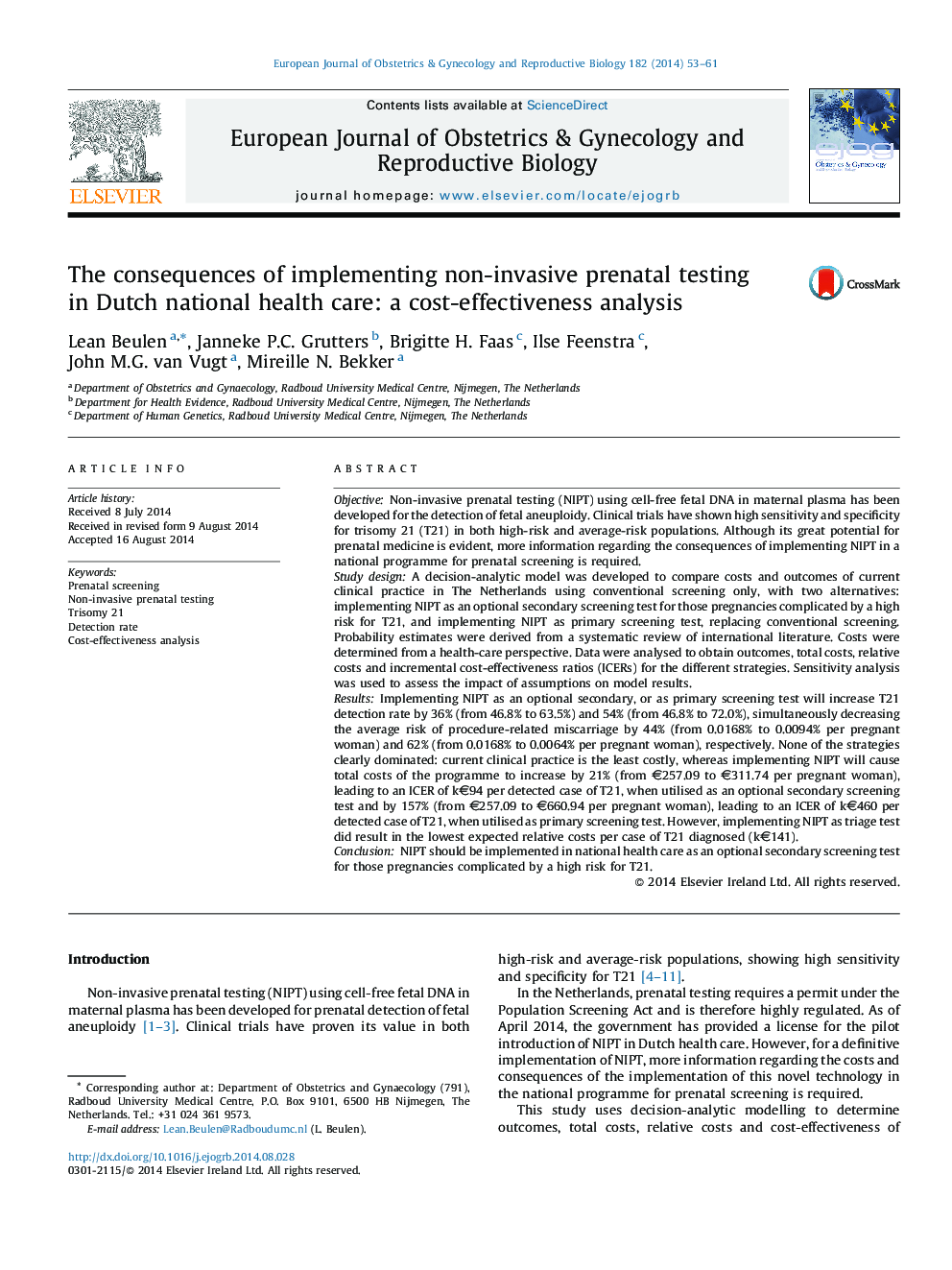| کد مقاله | کد نشریه | سال انتشار | مقاله انگلیسی | نسخه تمام متن |
|---|---|---|---|---|
| 6173422 | 1599799 | 2014 | 9 صفحه PDF | دانلود رایگان |
ObjectiveNon-invasive prenatal testing (NIPT) using cell-free fetal DNA in maternal plasma has been developed for the detection of fetal aneuploidy. Clinical trials have shown high sensitivity and specificity for trisomy 21 (T21) in both high-risk and average-risk populations. Although its great potential for prenatal medicine is evident, more information regarding the consequences of implementing NIPT in a national programme for prenatal screening is required.Study designA decision-analytic model was developed to compare costs and outcomes of current clinical practice in The Netherlands using conventional screening only, with two alternatives: implementing NIPT as an optional secondary screening test for those pregnancies complicated by a high risk for T21, and implementing NIPT as primary screening test, replacing conventional screening. Probability estimates were derived from a systematic review of international literature. Costs were determined from a health-care perspective. Data were analysed to obtain outcomes, total costs, relative costs and incremental cost-effectiveness ratios (ICERs) for the different strategies. Sensitivity analysis was used to assess the impact of assumptions on model results.ResultsImplementing NIPT as an optional secondary, or as primary screening test will increase T21 detection rate by 36% (from 46.8% to 63.5%) and 54% (from 46.8% to 72.0%), simultaneously decreasing the average risk of procedure-related miscarriage by 44% (from 0.0168% to 0.0094% per pregnant woman) and 62% (from 0.0168% to 0.0064% per pregnant woman), respectively. None of the strategies clearly dominated: current clinical practice is the least costly, whereas implementing NIPT will cause total costs of the programme to increase by 21% (from â¬257.09 to â¬311.74 per pregnant woman), leading to an ICER of kâ¬94 per detected case of T21, when utilised as an optional secondary screening test and by 157% (from â¬257.09 to â¬660.94 per pregnant woman), leading to an ICER of kâ¬460 per detected case of T21, when utilised as primary screening test. However, implementing NIPT as triage test did result in the lowest expected relative costs per case of T21 diagnosed (kâ¬141).ConclusionNIPT should be implemented in national health care as an optional secondary screening test for those pregnancies complicated by a high risk for T21.
Journal: European Journal of Obstetrics & Gynecology and Reproductive Biology - Volume 182, November 2014, Pages 53-61
